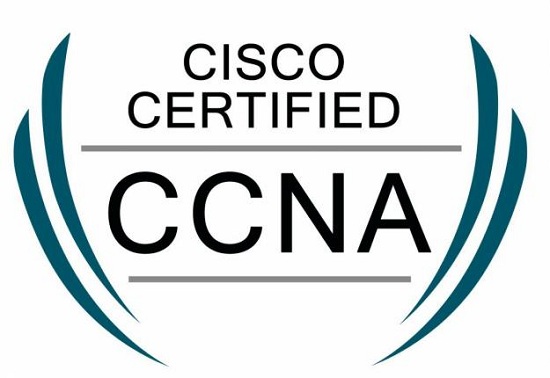 +919110672483
+919110672483 support@nihasacademy.com
support@nihasacademy.com Above Axis bank, Ramamurthy nagar main road, Bangalore.
Above Axis bank, Ramamurthy nagar main road, Bangalore.

Cisco Certified Network Associate—is an entry-level information technology (IT) certification issued by networking hardware company Cisco. The CCNA is designed to validate your knowledge on fundamental networking concepts often requested in networking roles in IT positions.
The CCNA (Cisco Certified Network Associate) is one of the most recognized and accepted information technology certifications in the computer networking industry today. Developed and promoted by Cisco Systems, the CCNA certification is considered a tool to gain entry-level jobs.
Cisco Certified Network Associate is a globally recognized associate-level certification for IT networking. This free CCNA course also covers the CCNA exam content and course flow of our complete CCNA certification training.
Learning Academy is a ISO 9001:2015 Certified Training Centers, which follows the Pre Described Training Format which gives the clear understanding of the Training Subject.
Yes, Learning Academy is Registered under Government of Karnataka.
Yes Learning Academy provides the separate Lab for students practicing, all classrooms are LED Connected to make sure our students feel comfortable.
Yes All Our Courses are Certified Courses, So all the students who completes the training from Learning Academy will be awarded with Course completion Certificate.
Yes, We have Flexible payment options for Students to make payments & we also provide Interest free EMI Options.
Yes, Every Student who joins for the courses will have a 100% Placement Assisstance with us.
• Compare and contrast OSI and TCP/IP models
• Compare and contrast TCP and UDP protocols
• Describe the impact of infrastructure components in an enterprise network
• Describe the effects of cloud resources on enterprise network architecture
• Compare and contrast collapsed core and three-tier architectures
• Compare and contrast network topologies
• Select the appropriate cabling type based on implementation requirements
• Apply troubleshooting methodologies to resolve problems
• Configure, verify, and troubleshoot IPv4 addressing and sub netting
• Compare and contrast IPv4 address types
• Describe the need for private IPv4 addressing
• Identify the appropriate IPv6 addressing scheme to satisfy addressing requirements in a LAN/WAN environment
• Configure, verify, and troubleshoot IPv6 addressing
• Configure and verify IPv6 Stateless Address Auto Configuration
• Compare and contrast IPv6 address types
• Describe and verify switching concepts
• Interpret Ethernet frame format
• Troubleshoot interface and cable issues (collisions, errors, duplex, speed)
• Configure, verify, and troubleshoot VLANs (normal/extended range) spanning multipleswitches
• Configure, verify, and troubleshoot interswitch connectivity
• Configure, verify, and troubleshoot STP protocols
• Configure, verify and troubleshoot STP related optional features
• Configure and verify Layer 2 protocols
• Configure, verify, and troubleshoot (Layer 2/Layer 3) EtherChannel
• Describe the benefits of switch stacking and chassis aggregation
• Describe the routing concepts
• Interpret the components of a routing table
• Describe how a routing table is populated by different routing information sources
• Configure, verify, and troubleshoot inter-VLAN routing
• Compare and contrast static routing and dynamic routing
• Compare and contrast distance vector and link state routing protocols
• Compare and contrast interior and exterior routing protocols
• Configure, verify, and troubleshoot IPv4 and IPv6 static routing
• Configure, verify, and troubleshoot single area and multi-area OSPFv2 for IPv4 (excluding
• authentication, filtering, manual summarization, redistribution, stub, virtual-link, and LSAs)
• Configure, verify, and troubleshoot single area and multi-area OSPFv3 for IPv6 (excluding
• authentication, filtering, manual summarization, redistribution, stub, virtual-link, and LSAs)
• Configure, verify, and troubleshoot EIGRP for IPv4 (excluding authentication, filtering, manual summarization, redistribution, stub)
• Configure, verify, and troubleshoot EIGRP for IPv6 (excluding authentication, filtering, manual summarization, redistribution, stub)
• Configure, verify, and troubleshoot RIPv2 for IPv4 (excluding authentication, filtering, manual summarization, redistribution)
• Troubleshoot basic Layer 3 end-to-end connectivity issues
• Configure and verify PPP and MLPPP on WAN interfaces using local authentication
• Configure, verify, and troubleshoot PPPoE client-side interfaces using local authentication
• Configure, verify, and troubleshoot GRE tunnel connectivity
• Describe WAN topology options
• Describe WAN access connectivity options
• Configure and verify single-homed branch connectivity using eBGP IPv4 (limited to peering and route advertisement using Network command only)
• Describe basic QoS concepts
• Describe DNS lookup operation
• Troubleshoot client connectivity issues involving DNS
• Configure and verify DHCP on a router (excluding static reservations)
• Troubleshoot client- and router-based DHCP connectivity issues
• Configure, verify, and troubleshoot basic HSRP
• Configure, verify, and troubleshoot inside source NAT
• Configure and verify NTP operating in a client/server mode
• Configure, verify, and troubleshoot port security
• Describe common access layer threat mitigation techniques
• Configure, verify, and troubleshoot IPv4 and IPv6 access list for traffic filtering
• Verify ACLs using the APIC-EM Path Trace ACL analysis tool
• Configure, verify, and troubleshoot basic device hardening
• Describe device security using AAA with TACACS+ and RADIUS
• Configure and verify device-monitoring protocols
• Troubleshoot network connectivity issues using ICMP echo-based IP SLA
• Configure and verify device management
• Configure and verify initial device configuration
• Perform device maintenance
• Use Cisco IOS tools to troubleshoot and resolve problems
• Describe network programmability in enterprise network architecture
It’s a Best place to learn any additional course to grow in Career. I would definitely recommend “Learning Academy” for the one who is willing to learn something to achieve their career goals or to increase their knowledge.
Very friendly and polite instructors, They give preference to our timings, Many courses are availabel one of the best I would suggest it for all. Thank you
Good teaching facilities, proper training provided by the trainer and practice session also I choose this institution as it was cost effective